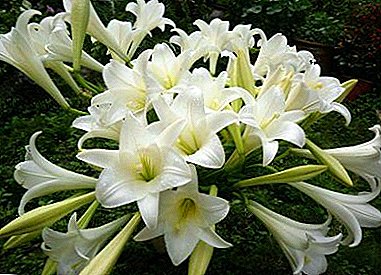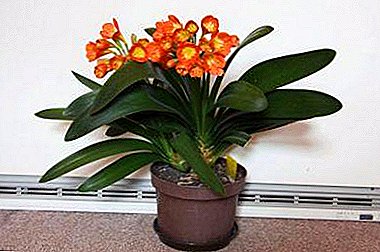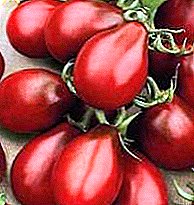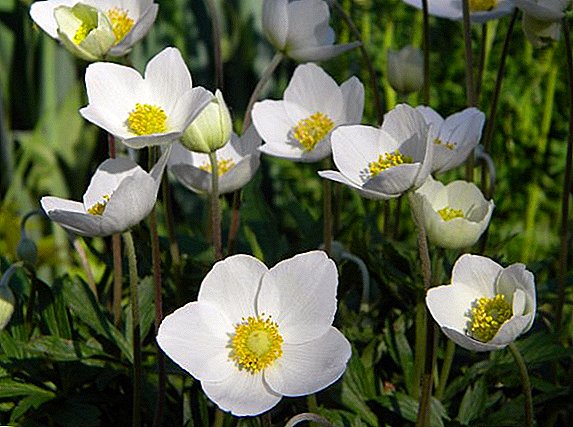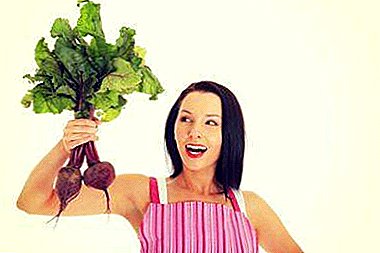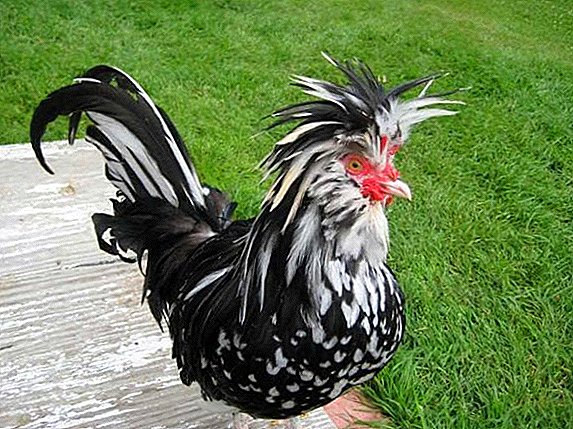 Fans of exotic breeds of chickens probably already heard about the beauty of the breed "Gudan". You may not mind having such beauties, but you are afraid that it is too tiring to care for them. Today we will talk about what conditions need to be created so that this breed is not translated in your hen-house.
Fans of exotic breeds of chickens probably already heard about the beauty of the breed "Gudan". You may not mind having such beauties, but you are afraid that it is too tiring to care for them. Today we will talk about what conditions need to be created so that this breed is not translated in your hen-house.
Origin
The exact date of the appearance of Gudan chickens is unknown, but the first statement about them in French literature dates back to 1858. It is believed that mass breeding of birds of this breed began in 1850. Then, in the French prefecture of Gudan, it was decided to breed a hen that would differ delicate taste of meat. For its creation used more than 10 different breeds of chickens. In 1870, these birds became popular in England, Germany, and the USA.  The Americans liked them so much that they accepted the breed standard in 1874. The breed had to be restored after the Second World War, since during this time it practically disappeared. At the same time, a dwarf variety was bred, which became generally recognized in 1959.
The Americans liked them so much that they accepted the breed standard in 1874. The breed had to be restored after the Second World War, since during this time it practically disappeared. At the same time, a dwarf variety was bred, which became generally recognized in 1959.
Did you know? In the II millennium BC. er in Persia, chickens were sacred, they were worshiped as gods.
External characteristics
To distinguish the Gudan breed from other similar birds, there are breed standards for the rooster:
- Growth is average.
- The head is wide, the shape of the skull is round with a bulge on which a large crest in the shape of a ball, consisting of dense, fluffy, long and hard plumage grows. The crest falls back, but not flat, it does not fit to the head.
- Comb red, consists of 2 identical toothed petals, in shape resembles a butterfly.
- The bill is curved, black, may be stained, the nostrils protrude.
- The eyes are red with yellow, the face is scarlet.
- The ear lobes and catkins are small, covered with a thick beard, can be painted in any color.
- The beard borders the face and beak, the plumage grows downwards.
- The neck is of medium length, covered with thick fluffy plumage, well developed.
- The build is strong, well-developed muscles. The body shape is cylindrical, oblong and massive. The body is slightly upturned, located almost parallel to the ground.
- The back is well developed, of medium length, with fluffy plumage on the back.
- The chest is convex, fleshy, well developed in width and depth.
- The belly is plump.
- The wings are adjacent to the body.
- The tail is thick, well-feathered, feathers delicately curved.
- The tibiae are strong, not long, almost fully fledged.
- There are no feathers on the paws, the paws are short, wide apart, painted white with red or gray, there may be black spots, the number of fingers is 5. The distance between 4 and 5 fingers should be noticeable, the 5 finger is well developed, slightly pointing upwards.
- Feathers fluffy, pliable, adjacent to the body.

The chicken, according to breed standards, should look like this:
- The body is horizontal, better developed than that of the rooster.
- The chest and abdomen are full-bodied, developed in width and depth.
- The back is long and wide, lowered to the tail.
- The tail is of medium size, low, preloaded.
- The crest is well-feathered, high, the arrangement is proportional to the head, the shape is rounded.
- A lush beard grows around the face and under the beak.
The exotic breeds include such chickens as: Araucana, Ayam Tsemani, Pavlovskaya Golden, Chinese Silk, Cochin Dwarf and Sibrayt.
Chickens breed "Gudan" can be painted in these colors:
- white;
- blue;
- black and white (most popular).
Important! Chickens with thin undeveloped body, flattened breast, crest, inappropriate description, undeveloped fingers, an unevenly growing tuft, without a lush beard, with yellow and pure white feathers around the head, neck, on the waist are excluded from breeding.
Dwarf chickens
Externally, dwarf chickens breed "Gudan" are similar to large chickens, only in miniature. They are characterized by:
- chest and abdomen round, large;
- broad shoulders;
- the body has the shape of a cylinder;
- the tail of the cock is lush, pointing upwards;
- beard grows abundantly;
- the crest does not fall on the eyes;
- comb toothed, shaped like a butterfly, petals are the same;
- eyes dull orange or terracotta;
- the fifth finger grows separately, pointing upwards;
- rooster weight is 1.1 kg, chicken - 0.9 kg;
- The egg weighs about 32 g.

Nature of chickens
The main character traits of the birds of this breed are:
- goodwill;
- peacefulness;
- sociability;
- rejection of strife and fights;
- activity;
- equilibrium;
- calm;
- benevolence towards the owner;
- roosters are courageous and fearless.
Find out when pullets of pullets begin to rush, what to do if chickens do not rush and why chickens peck eggs.
What to feed
The menu of adult bird breed "Gudan" should include daily:
- several types of grain (90-100 g);
- cake or meal (12-13 g);
- bran (10 g);
- boiled potatoes (20-50 g);
- fodder yeast (3-4 g);
- silage, which can be replaced by carrots (20-40 g);
- herb (50 g);
- grass meal during the cold period (10 g);
- meat and bone meal, which can be replaced by fish (5 g);
- skimmed fresh milk (20-30 g);
- chalk or crushed shells (4-5 g);
- salt (0.5 g).

Maintenance and care
In order for the content of the hens of the breed "Gudan" to meet the standards, in the organization of care for them it is necessary to follow these rules:
- Since at home these chickens live in a relatively warm climate, it is necessary to build a warm roomy chicken coop where the temperature will be at + 11-17 ° C, and the chickens will not be crowded.
- Since these birds like to move, they should have a yard for walking.
- The territory where chickens are walking should be protected from attacks - their viewing angle is limited due to the tuft.
- In order for the birds to receive plenty of green food, the yard should be sown with grass.
- In order to preserve the beauty of the plumage of “Gudan” hens, it is necessary to monitor the cleanliness of the litter in the hen house.
- Take care to install enough feeders and drinkers, otherwise the fight for food, water, and the dirt from the scattered food will worsen the appearance of chickens.
- If you plan to keep these chickens together with other living creatures, make sure that the neighbors are not conflict.
Read also about how to keep chickens in winter and whether they can be kept in cages.
Moult
In the fall, the Gudan chickens begin to change their plumage and prepare for the next season — a seasonal molt begins. During this period, they stop carrying eggs. The plumage change is a normal physiological process that does not cause problems if the birds get a balanced diet, rich in vitamins and minerals and characterized by sufficient caloric content. 
Important! During the molting period, the hens of the Gudan breed increase their sensitivity to cold, so the breeders need to take care to protect them from hypothermia.
Productivity
The main characteristics of the productivity of birds are given in Table. one.
Table 1
Gudan Breed Performance Indicators
| Indicator | Value |
| Rooster weight, kg | 2,5-3 |
| Chicken weight, kg | 2-2,5 |
| The number of eggs in the first year, pcs. | 160 |
| The number of eggs in the second year, pcs. | 130 |
| Egg weight, g | 50-55 |
| Egg shell color | white |
Not very large size of birds in combination with a very delicate taste of meat with good egg production led to the fact that they are referred to meat and egg breeds. 
Did you know? In China, you can buy fake eggs made from calcium carbonate and gelatin, taste and color they give with dyes and food additives. In appearance, such eggs are not distinguishable from real ones.So, if you like chickens with an unusual appearance, the breed "Gudan" is what you need. These beautiful birds will not only beautify any chicken coop, but also delight every lover of gastronomic delights with delicious meat. However, in order to meet your expectations of success, provide these birds with the right conditions of detention.


